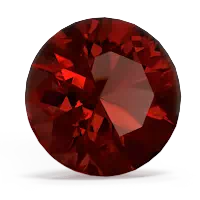

Friendship, love and loyalty are represented by this historic celtic design. A Garnet claddagh ring with your birthstone or favorite color makes it even more significant. One of the oldest gemstones in history, garnet is the birthstone of January. Garnet rings have been popular since Victorian times, and are treasured for their deep red color. The birthstone of May, an emerald ring symbolizes the eternally returning spring. The velvety green color of emerald is a perfect match for spring and summer fashions.